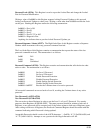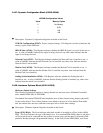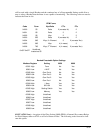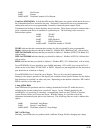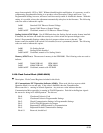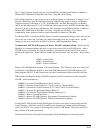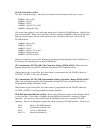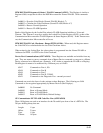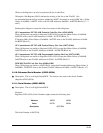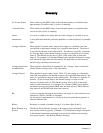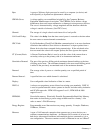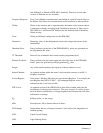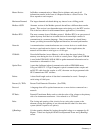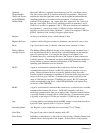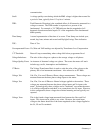
Glossary-4
Master Device: In Modbus communication, a Master Device initiates and controls all
information transfer in the form of a Request Packet to a Slave Device. The
Slave reponds to each request.
Maximum Demand: The largest demand calculated during any interval over a billing period.
Modbus ASCII: Alternate version of the Modbus protocol that utilizes a different data transfer
format. This version is not dependent upon strict timing, as is the RTU version.
This is the best choice for telecommunications applications (via modems).
Modbus RTU: The most common form of Modbus protocol. Modbus RTU is an open protocol
spoken by many field devices to enable devices from multiple vendors to
communicate in a common language. Data is transmitted in a timed binary
format, providing increased throughput and therefore, increased performance.
Network: A communications connection between two or more devices to enable those
devices to send and receive data to one another. In most applications, the
network will be either a serial type or a LAN type.
NVRAM: Nonvolatile Random Access Memory is able to keep the stored values in
memory even during the loss of circuit or control power. High speed NVRAM
is used in the EPM 9450, 9650 & 9800 to gather measured information and to
insure that no information is lost.
Optical Port: A port that facilitates infrared communication with an EPM 9800 meter.
Using an ANSI C12.13 Type II magnetic optical communications coupler and
an RS-232 cable from the coupler to a PC, the meter can be programmed with
GE Communicator EXT software.
Packet: A short fixed-length section of data that is transmitted as a unit. Example: a
serial string of 8-bit bytes.
Percent (%) THD: Percent Total Harmonic Distortion. (See THD.)
Protocol: A language that will be spoken between two or more devices connected on a
network.
PT Ratio: Potential Transformer Ratio used to scale the value of the voltage to the primary
side of an instrument transformer. Also referred to as VT Ratio.
Pulse: The closing and opening of the circuit of a two-wire pulse system or the
alternate closing and opening of one side and then the other of a three-wire
system (which is equal to two pulses).
Q Readings: Q is the quantity obtained by lagging the applied voltage to a wattmeter by 60
degrees. Values are displayed on the Uncompensated Power and Q Readings
screen.



